Conductors for electric current
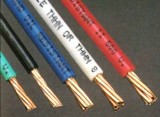 Every person who constantly uses electrical appliances is faced with:
Every person who constantly uses electrical appliances is faced with:
1. wires that carry electric current;
2. dielectrics with insulating properties;
3. semiconductors that combine the characteristics of the first two types of substances and change them depending on the applied control signal.
A distinctive feature of each of these groups is the property of electrical conductivity.
What is a conductor
Conductors include those substances that have in their structure a large number of free, not connected electric charges that can begin to move under the influence of an applied external force. They can be solid, liquid or gaseous.
If you take two wires with a potential difference between them and connect a metal wire inside them, then an electric current will flow through it. Its carriers will be free electrons that are not held back by the bonds of atoms. They characterize electrical conductivity or the ability of any substance to pass electric charges through itself — current.
The value of electrical conductivity is inversely proportional to the resistance of the substance and is measured with the corresponding unit: siemens (cm).
1 cm = 1/1 ohm.
In nature, charge carriers can be:
-
electrons;
-
ions;
-
holes.
According to this principle, electrical conductivity is divided into:
-
electronic;
-
ionic;
-
a hole.
The quality of the wire allows you to estimate the dependence of the current flowing in it on the value of the applied voltage. It is customary to call it by designating the units of measurement of these electrical quantities — the volt-ampere characteristic.
Conductive wires
The most common representatives of this type are metals. Their electric current is created exclusively by moving the flow of electrons.
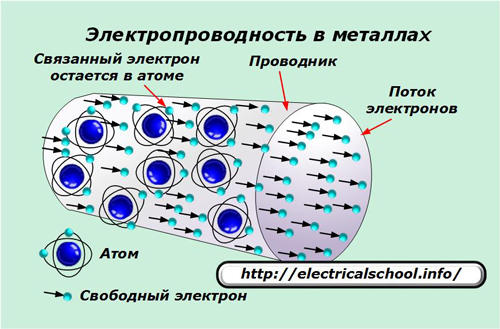
Inside metals, they exist in two states:
-
associated with atomic forces of cohesion;
-
Free of charge.
Electrons held in orbit by the attractive forces of the nucleus of an atom, as a rule, do not participate in the creation of an electric current under the action of external electromotive forces. Free particles behave differently.
If no EMF is applied to the metal wire, then the free electrons move randomly, randomly, in any direction. This movement is due to thermal energy. It is characterized by different speeds and directions of movement of each particle at any given moment.
When the energy of an external field of intensity E is applied to the conductor, then a force directed opposite to the applied field acts on all the electrons together and each individually. It creates a strictly oriented movement of electrons, or in other words, an electric current.
The current-voltage characteristic of metals is a straight line that fits the operation of Ohm's law for a section and a complete circuit.
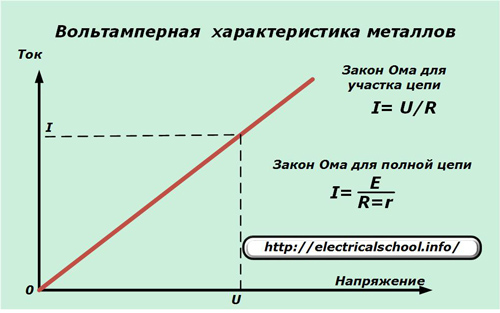
Besides pure metals, other substances also have electronic conductivity. They include:
-
alloys;
-
some modifications of carbon (graphite, coal).
All the above substances, including metals, are classified as conductors of the first type. Their electrical conductivity is in no way related to the transfer of mass of a substance due to the passage of an electric current, but is caused only by the movement of electrons.
If metals and alloys are placed in an environment with extremely low temperatures, they pass into a state of superconductivity.
Ion conductors
This class includes substances in which an electric current is created due to the movement of charged ions. They are classified as type II conductors. It:
-
solutions of bases, acid salts;
-
melts of various ionic compounds;
-
various gases and vapors.
Electric current in a liquid
Electrically conductive liquids in which electrolysis — the transfer of a substance along with the charges and its deposition on the electrodes are usually called electrolytes, and the process itself is called electrolysis.
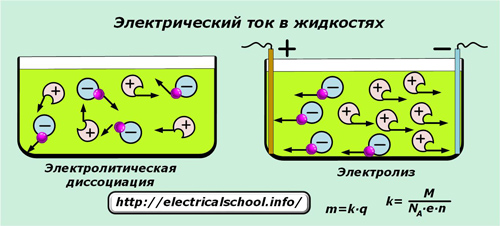
It occurs under the action of an external energy field due to the application of a positive potential to the anode electrode and a negative potential to the cathode.
Ions inside liquids are formed due to the phenomenon of electrolyte dissociation, which consists in the separation of some of the molecules of a substance that have neutral properties. An example is copper chloride, which decomposes in aqueous solution into its component copper ions (cations) and chlorine (anions).
CuCl2꞊Cu2 ++ 2Cl-
Under the action of the voltage applied to the electrolyte, the cations begin to move strictly to the cathode, and the anions to the anode. In this way, chemically pure copper without impurities is obtained, which is deposited on the cathode.
In addition to liquids, there are also solid electrolytes in nature. They are called superionic conductors (super-ions), which have a crystalline structure and ionic nature of chemical bonds, which causes high electrical conductivity due to the movement of ions of the same type.
The current-voltage characteristic of electrolytes is shown in the graph.
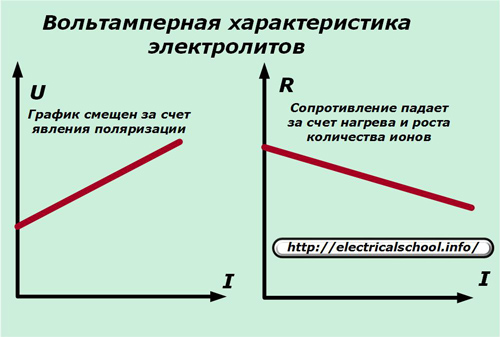
Electric current in gases
Under normal conditions, the gas medium has insulating properties and does not conduct current. But under the influence of various disturbing factors, the dielectric characteristics can sharply decrease and provoke the passage of ionization of the medium.
It arises from the bombardment of neutral atoms by moving electrons. As a result, one or more bound electrons are knocked out of the atom and the atom acquires a positive charge, becoming an ion. At the same time, an additional amount of electrons is formed inside the gas, continuing the ionization process.
In this way, an electric current is created inside the gas by the simultaneous movement of positive and negative particles.
A sincere discharge
When heating or increasing the strength of the applied electromagnetic field inside the gas, a spark first pops out. According to this principle, natural lightning is formed, which consists of channels, a flame and an exhaust torch.
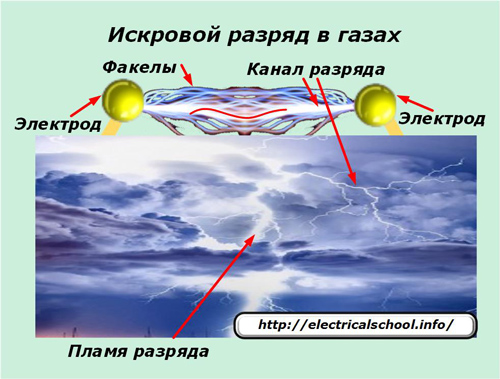
In laboratory conditions, a spark can be observed between the electrodes of the electroscope.The practical implementation of spark discharge in spark plugs of internal combustion engines is known to every adult.
Arc discharge
The spark is characterized by the fact that all the energy of the external field is immediately consumed through it. If the voltage source is able to maintain current flow through the gas, then an arc occurs.
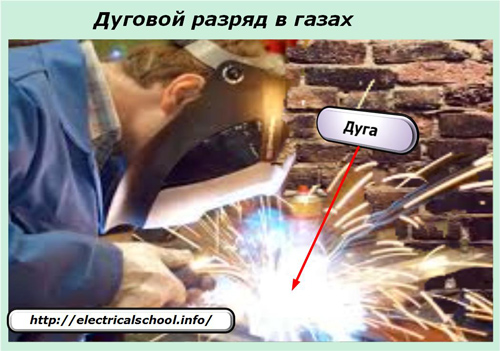
An example of an electric arc is the welding of metals in various ways. For its flow, the emission of electrons from the surface of the cathode is used.
Coronal ejection
This happens in a gas environment with high strength and uneven electromagnetic fields, which is manifested on high-voltage overhead power lines with a voltage of 330 kV and more.
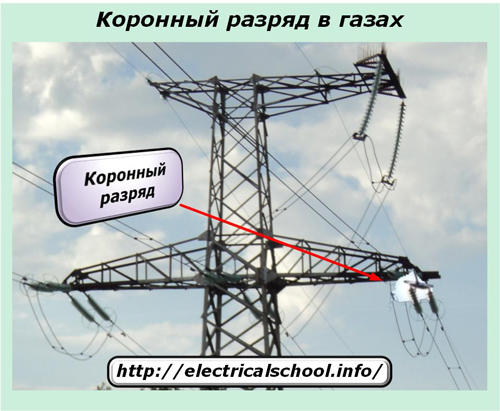
It flows between the conductor and the closely spaced plane of the power line. In a corona discharge, ionization takes place by the method of electron impact near one of the electrodes, which has an area of increased strength.
Glow discharge
It is used inside gases in special gas discharge lamps and tubes, voltage stabilizers. It is formed by lowering the pressure in the exhaust gap.
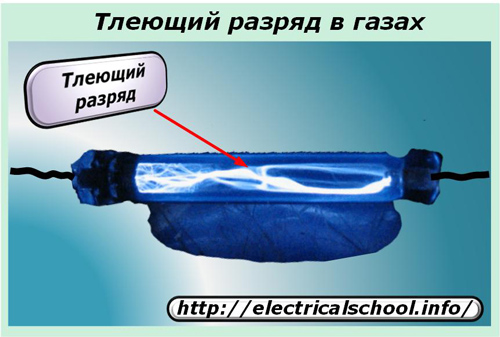
When the ionization process in gases reaches a large value and an equal number of positive and negative charge carriers are formed in them, then this state is called plasma. A glow discharge appears in a plasma medium.
The current-voltage characteristic of the flow of currents in gases is shown in the picture. It consists of sections:
1. dependent;
2. Self-discharge.
The first is characterized by what happens under the influence of an external ionizer and goes out when it stops working. A self-eject continues to flow under all conditions.
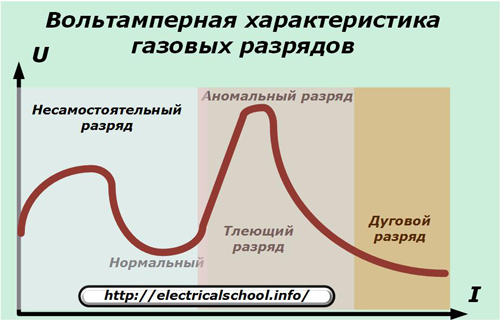
Hole wires
They include:
-
germanium;
-
selenium;
-
silicon;
-
compounds of some metals with tellurium, sulfur, selenium and some organic substances.
They are called semiconductors and belong to group No. 1, that is, they do not form a transfer of matter during the flow of charges. To increase the concentration of free electrons inside them, it is necessary to spend additional energy to separate the bound electrons. It is called ionization energy.
An electron-hole junction operates in a semiconductor. Because of it, the semiconductor passes current in one direction and blocks in the opposite direction when an opposite external field is applied to it.
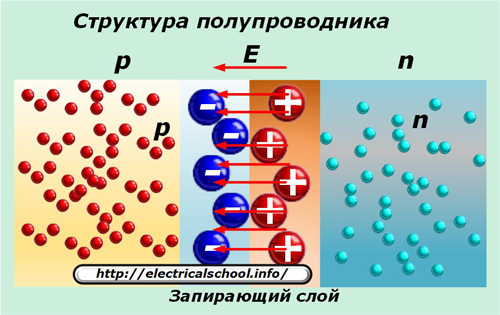
Conductivity in semiconductors is:
1. own;
2. impurity.
The first type is inherent in structures in which charge carriers appear in the process of ionization of atoms from their substance: holes and electrons. Their concentration is mutually balanced.
The second type of semiconductor is created by incorporating crystals with impurity conductivity. They have atoms of a trivalent or pentavalent element.
Conducting semiconductors are:
-
electronic n-type «negative»;
-
hole p-type «positive».
Volt-amperes characteristic of ordinary semiconductor diode shown in the graph.
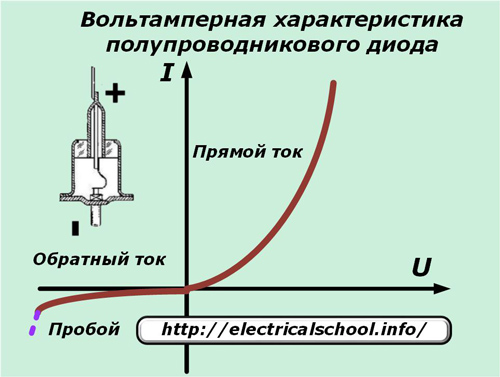
Various electronic devices and devices work on the basis of semiconductors.
Superconductors
At very low temperatures, substances from certain categories of metals and alloys pass into a state called superconductivity. For these substances, the electrical resistance to the current decreases almost to zero.
The transition occurs due to a change in thermal properties.With regard to the absorption or release of heat during the transition to the superconducting state in the absence of a magnetic field, superconductors are divided into 2 types: No. 1 and No. 2.
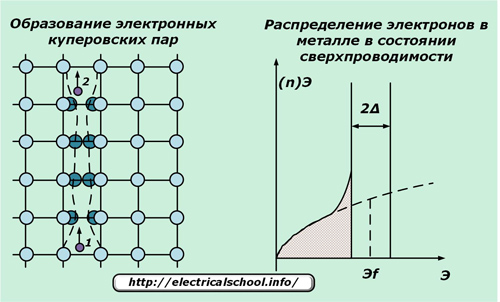
The phenomenon of superconductivity of wires occurs due to the formation of Cooper pairs when a bound state is created for two neighboring electrons. The pair created has a double electron charge.
The distribution of electrons in a metal in a superconducting state is shown in the graph.
The magnetic induction of superconductors depends on the strength of the electromagnetic field, and the value of the latter is affected by the temperature of the substance.
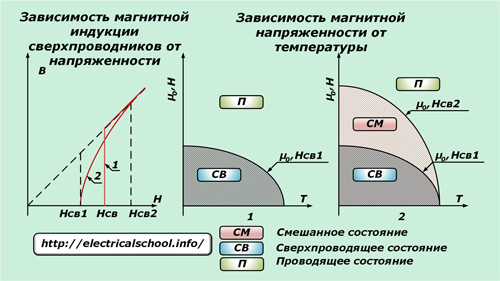
The superconducting properties of wires are limited by the critical values of the limiting magnetic field and temperature for them.
Thus, conductors of electric current can be made of completely different substances and have different characteristics from each other. They are always influenced by environmental conditions. For this reason, the limits of the characteristics of the wires are always determined by the technical standards.
